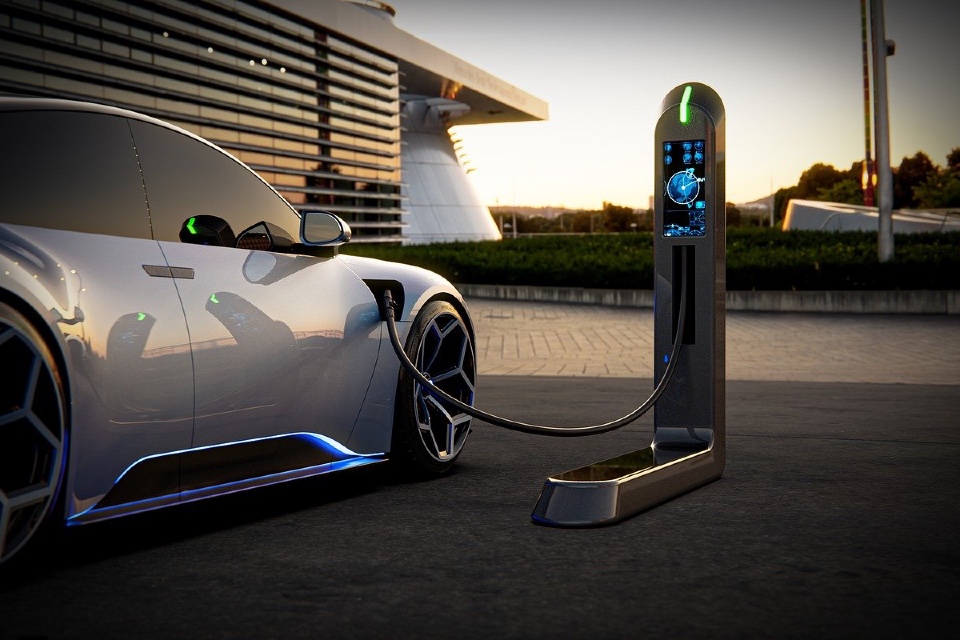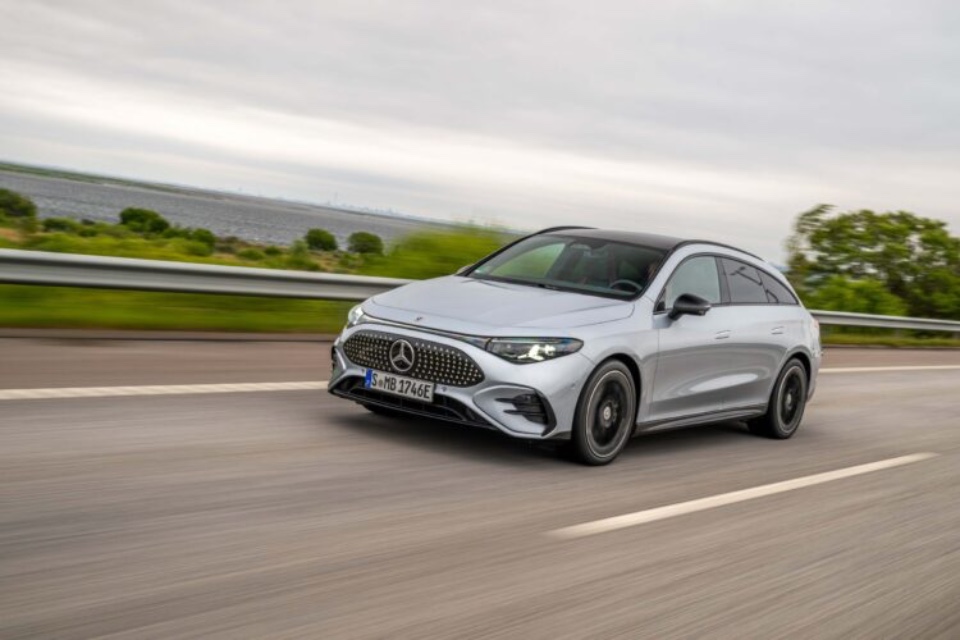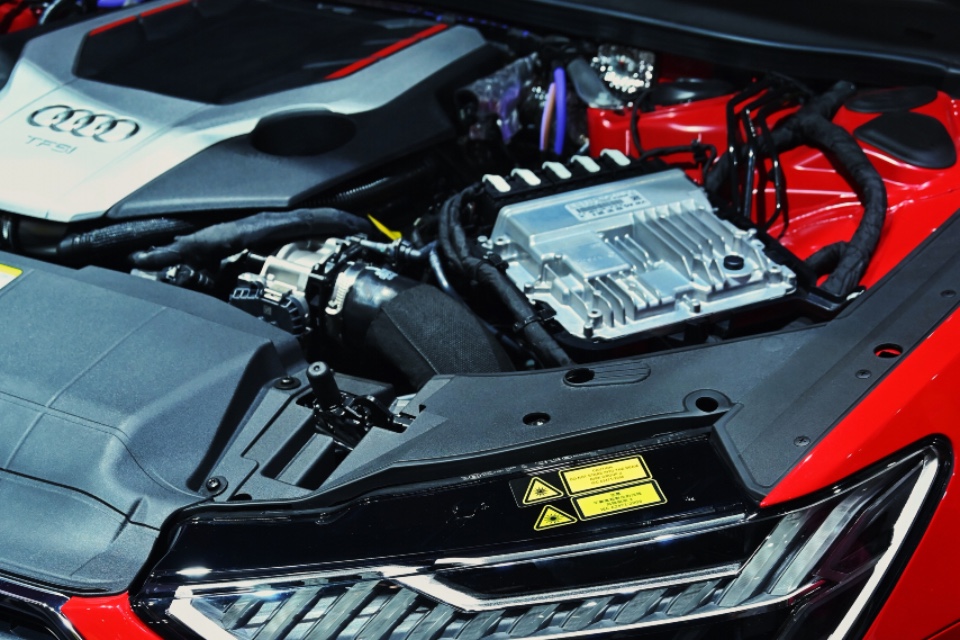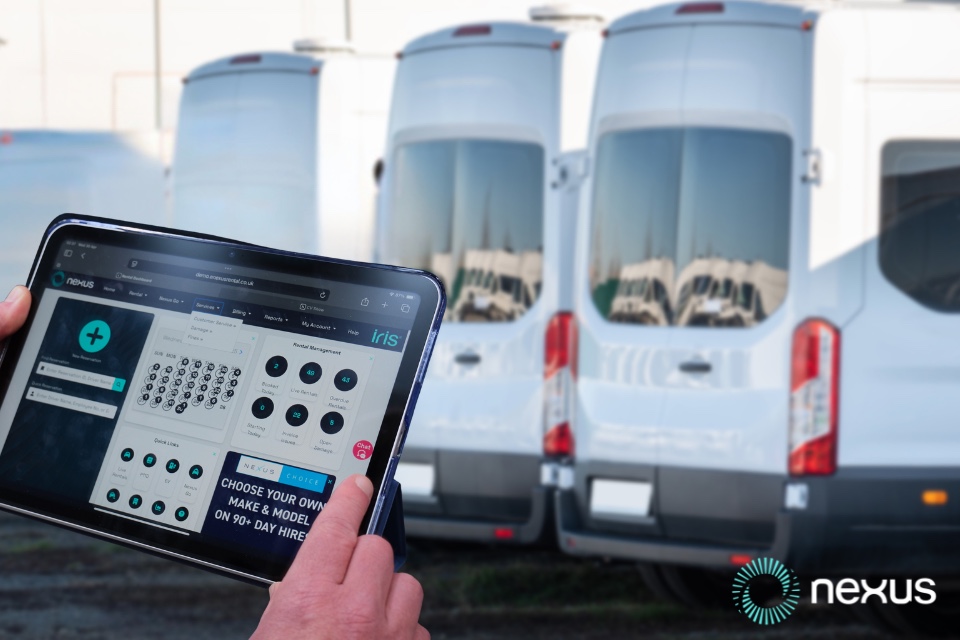Global EV sales reached 7.7 million units in 2022, up from 1.4 million units in 2018, and are anticipated to reach 51.6 million units in 2035, driven by government mandates and infrastructure investments.
That’s according to GlobalData‘s latest report, “Electric Vehicles Market Report, Update 2023 – Global Market Outlook, Trends, and Key Country Analysis,” which reveals that during 2022-35, the total EV market is expected to expand at a compound annual growth rate (CAGR) of 15.9%, whereas the passenger EV segment is expected to register a CAGR of 26.1%.
The commercial EV segment is expected to record a CAGR of 15% during the same period. The sales of battery electric passenger cars are expected to reach 44 million units by 2035 from 7.3 million units in 2022. The sales of battery electric commercial vehicles were 0.4 million units in 2022 and are anticipated to reach 7.6 million units by 2035.
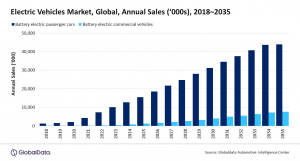
Attaurrahman Ojindaram Saibasan, Power Analyst at GlobalData, said: “The increasing prices of gasoline, growing EV infrastructure, including the number of charging stations, maintenance hubs and facilities related to electric vehicles, and growing concern about environmental pollution are the major reasons behind the increasing adoption of electric vehicles worldwide.”
China is the largest EV market in the world, with annual sales of battery electric vehicles (BEVs) of five million units in 2022. Being an early adopter of EVs, China has numerous local and international companies offering a range of EV models. The government’s focus on the promotion and adoption of EVs to reduce pollution is another important factor contributing to the growth of the EV market in China.
Saibasan added: “The Asia-Pacific (APAC) region is leading the EV market in terms of annual sales globally, followed by Europe and the Americas. In 2022, APAC accounted for 69.3% of the sales, followed by Europe with 19% and the Americas with 10%. The presence of market leader China in the APAC region is the key factor for its major share. The region is anticipated to hold the major share of the market of 41.4%, followed by Europe with 31.6% and the Americas with 19.4% by 2035.”
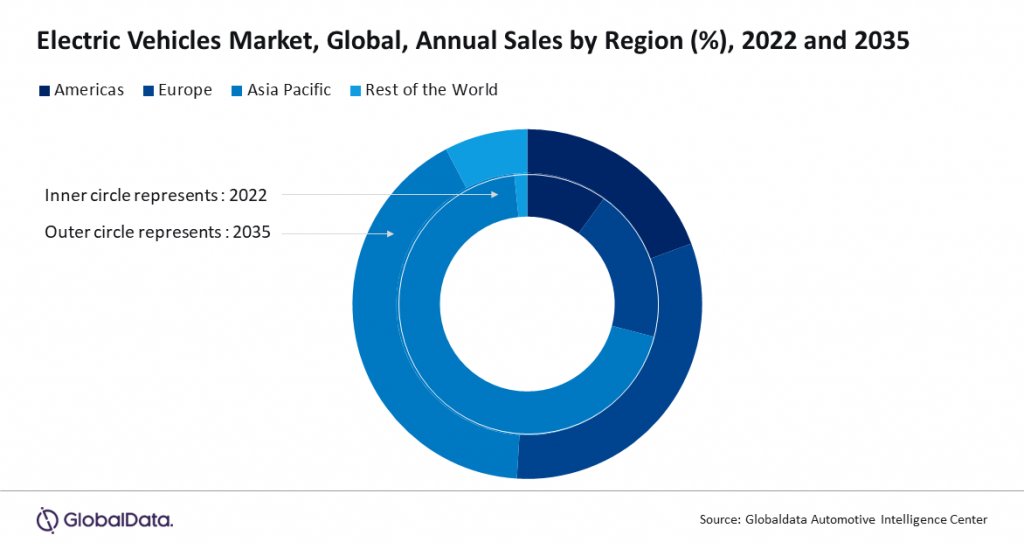
The US federal government has set a target to make half of all new vehicles sold in the country zero-emission vehicles by 2030 and to establish a suitable network of 500,000 chargers to support the agenda of making EVs more accessible to all Americans for local and long-distance travel.
In 2022, the European Commission and the European Parliament and Council supported a policy of supporting the zero-emission target by implementing all new cars and vans registered in Europe to be zero-emission by 2035. The governments of various countries in APAC are also increasingly investing in electric mobility. In India, Faster Adoption and Manufacturing of (Hybrid and) Electric Vehicles (FAME) and FAME-II are the flagship schemes for promoting electric mobility. All these factors bode well for the EV market.
Saibasan concluded: “The increasing concern over environmental pollution and the growing number of targets and policies related to the net zero carbon emission economies of different countries have fuelled the global demand for EVs. Reducing global carbon dioxide emissions to net zero by 2050 is consistent with efforts to curb the long-term increase in average global temperatures to 1.5°C. The global pathway to net‐zero emissions by 2050 requires all governments to improve and effectively employ their climate policies. To reduce greenhouse gas (GHG) emissions, countries are focusing on preventing the burning of fossil fuels for transportation and encouraging the use of EVs.”
Image by Lee Rosario from Pixabay




